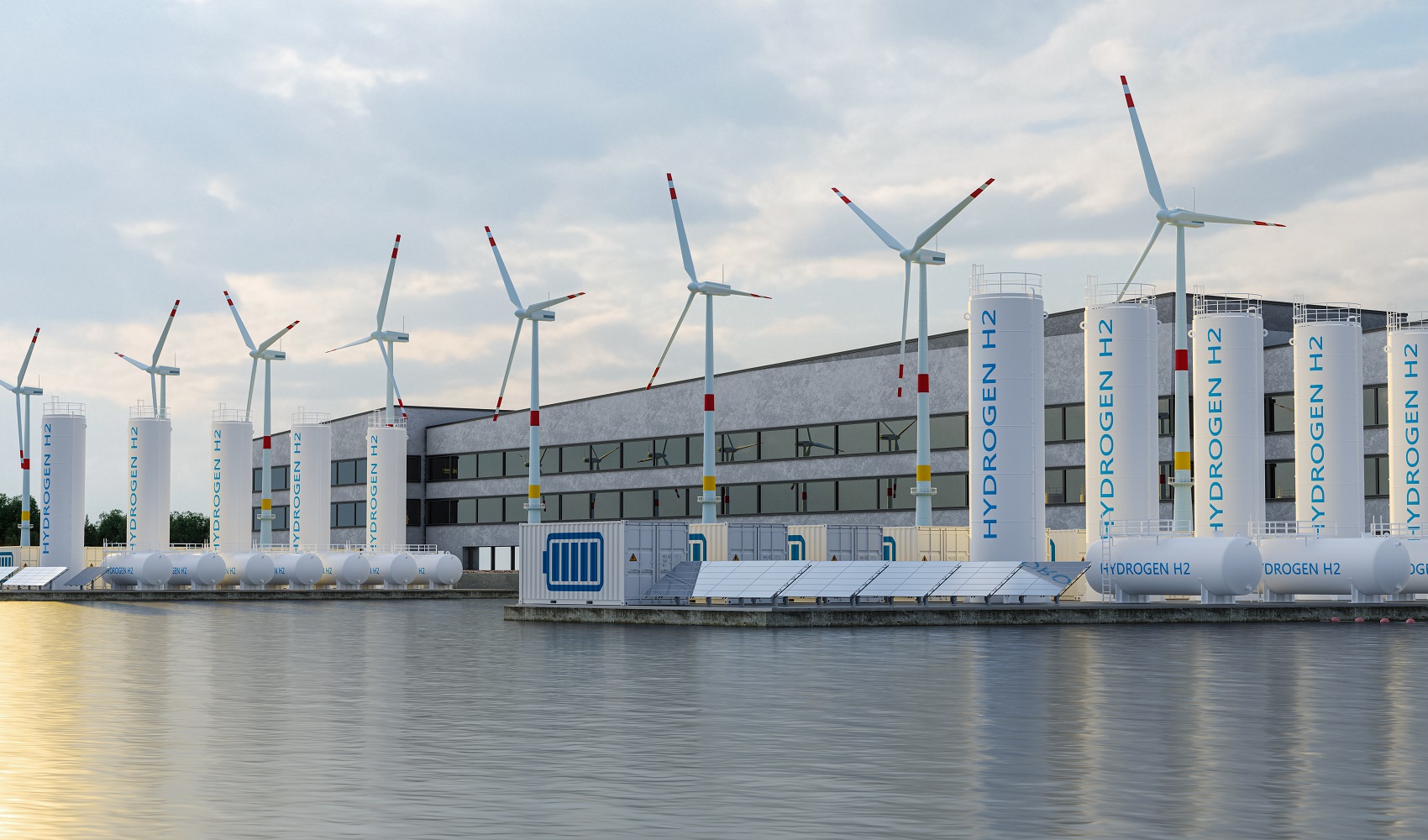The calendar date of 24 July 2025 is Earth Overshoot Day— when humanity’s demand on nature exceeds Earth’s biocapacity. It’s a stark reminder that humanity, yet again, has exhausted nature’s annual bounty and begun to accrue an ecological debt. We are living on borrowed resources and a rapidly diminishing planetary budget. But this date, while sobering, is also a powerful call to action. It’s a precise measure of our challenge and, crucially, a target for our collective ambition. How do we #MoveTheDate? How do we shift this pivotal point later into the year, and ultimately, reclaim a sustainable future?
At Xynteo, we firmly believe the answer lies not in despair, but in decisive, collaborative action. We’ve gathered insights from our senior leadership team—Amy Marshall, Emrah Durusut, Sam Preece, Erik Darner, Vipul Kumar, and Suman Jagdev—each a visionary in their field, to share their perspectives on the critical opportunities that can help #MoveTheDate within the next 12 months. Their views, grounded in deep expertise and a pragmatic optimism, paint a compelling picture of how business can be a powerful force for regeneration, not just consumption.

Amy Marshall: Policy, innovation, and the urgency of unified action
Here’s the unvarnished truth—it’s not going to be a smooth path, but we must lean in and do our part to make a positive change. In the last few years, I’ve witnessed incredible pockets of progress, yet Earth Overshoot Day tells us we’re not moving fast enough. In my opinion, critical opportunities in the next 12 months lie in accelerating the adoption of coherent policy frameworks and fostering cross-sectoral innovation.
While the UK has made strides in areas such as renewable energy deployment, a more holistic and decisive policy landscape is paramount. Take the EV transition, for instance: great progress, but are we truly addressing the full lifecycle emissions, from raw material extraction to end-of-life battery management? Balanced and measured analysis is key—we need policies that not only incentivise adoption but also embed circularity and resource efficiency at every stage. The competitive pressures from international markets are real, and nations that establish clear, ambitious, and supportive regulatory environments will reap the economic and environmental rewards.
My focus is always on moving systematically from identifying challenges to proposing practical, scalable solutions. We recognise the issues, we adjust, we fix them, and we reorient. A prime example is the need for harmonised carbon pricing mechanisms globally. This isn’t just an environmental dictate; it’s a financial imperative that will level the playing field and drive investment into truly sustainable practices. The World Bank’s growing advocacy for carbon pricing, with over 70 national and subnational jurisdictions implementing initiatives as of 2024, shows this clearly [2]. We must ground our arguments in specific financial metrics and policy targets, making these complex sustainability concepts understandable for varied audiences, from the boardroom to the factory floor. Decisive policy changes, backed by robust data, are not just desirable; they are a non-negotiable step to truly energise our collective journey towards a regenerative future.

Emrah Durusut: Building a carbon-neutral future, one building at a time
What if we stopped thinking about ‘less bad’ and started designing for ‘more good’? At Xynteo, that’s what we aim to do. The built environment value chain accounts for nearly 40% of global energy-related carbon dioxide emissions [3]. But imagine a future where every new building contributes positively to its environment, rather than draining resources. That’s not just a dream; it’s a commercially viable reality we’re actively building— we aim to deliver the UK’s first truly carbon-neutral building, not just in operation, but across its entire lifecycle.
This isn’t straightforward, but by bringing together innovative and low-carbon materials, leading designers and developers, green financing and investment, we’re demonstrating what’s possible. We’re proving that sustainable building isn’t a cost burden; it’s a competitive advantage, attracting premium clients and delivering long-term value.

Sam Preece: Practical steps, dual benefits, and the art of achievable change
Right for business, right for the planet—that’s the dual benefit we’re constantly striving for. To move the date, we need to focus on what’s immediately actionable. It’s about finding those eloquent solutions that not only enhance sustainability outcomes but also create extra value for businesses. Take, for instance, optimising supply chains. By collaborating with suppliers to reduce packaging, streamline logistics, and minimise waste, businesses cut costs and their environmental footprint simultaneously. A recent report by McKinsey & Company highlighted that sustainable supply chain practices can lead to 15-20% cost savings for businesses [5]. It’s just good business practice.
From an investment perspective, this means prioritising companies that are embedding sustainability into their core operations, not just as a bolt-on. This includes investing in circular economy models, where waste becomes a resource, and embracing technologies that improve resource efficiency, from smart energy management in buildings to redefining waste as an utilised resource.
Consider the power of many small, incremental changes across a large enterprise. Improved energy efficiency in buildings, waste segregation programmes, using data to change travel patterns and behaviours—these aren’t headline-grabbing, or in themselves material, but in the aggregate start to make a significant shift. A study by the Carbon Trust found that small and medium-sized enterprises (SMEs) can reduce their energy consumption by up to 20% through simple behavioural changes and energy efficiency measures [6]. It’s about instilling a culture where sustainability is everyone’s responsibility, and where the financial benefits of environmentally sound practices are clearly understood and tracked. It’s about making sustainable behaviours the default and offering easy choices, for employees and customers alike.

Vipul Kumar: Driving systemic change through collaboration and circularity
The critical opportunities to #MoveTheDate in the next 12 months hinge on our ability to embrace systemic change, foster unprecedented collaboration, and embed circular economy principles into every facet of our operations. It’s about moving beyond individual efforts and recognising the necessity of collective action.
My perspective is deeply rooted in understanding business trends and strategies, drawing lessons from across diverse sectors. Collaboration isn’t just a buzzword; it’s a powerful solution to current business challenges, especially in sustainability. Collaboration addresses sustainability challenges by aligning resources, integrating diverse knowledge and networks, distributing responsibility, and building trust among actors. It transforms fragmented efforts into unified, systemic action—essential for lasting and transformative change.
I champion the circular economy as a fundamental shift in how businesses operate. We’re moving away from a linear ‘take-make-dispose’ model to one where products, components, and materials are kept at their highest utility and value for as long as possible. This means designing for durability, repairability, and recyclability from the outset. In the next 12 months, the focus needs to be on implementing closed-loop systems, exploring new business models like product-as-a-service, and investing in technologies that enable material recovery and reuse. The Ellen MacArthur Foundation estimates that a global transition to a circular economy could generate $4.5 trillion in economic benefits by 2030 [8].
Let’s look at the inspirational potential of this shift. Envision a future where resource scarcity is not a limitation, but a catalyst for innovation. Where waste is no longer a liability but a valuable input. This requires a confident, authoritative stance on business trends and a willingness to look at other sectors for inspiration. From industrial symbiosis to collaborative innovation platforms, the pathways to a regenerative economy are emerging. It’s time for businesses to not only adapt but to lead, inspiring readers to envision a positive, prosperous future where we live within our planetary means.

Suman Jagdev: Decarbonising and pioneering the green transition in the heavy industry sector
To truly #MoveTheDate, the urgent need for businesses to adapt quickly to changing market conditions and sustainability demands is clear. The critical opportunities in the next 12 months hinge on our ability to drive deep, structural change within the foundational heavy industry and natural resources sectors.
My perspective is rooted in real-world application. For example, within the built environment which contributes 40% to global CO2 emissions and is a key end-use sector for some of the hard-to-abate materials such as cement and steel, we must accelerate the adoption of low-carbon building materials and energy-efficient construction practices to shift the needle beyond energy efficiency in buildings. It is especially crucial in developing countries, where there is significant new construction underway and this means pushing for wider use of industrial by-products in cement and concrete to substitute clinker, scaling up sustainable timber, and innovating with new modular and pre-fabricated techniques that reduce on-site waste and embodied carbon. For the next 12 months, the opportunity lies in forging stronger cross-value chain partnerships—from material suppliers to construction firms and developers—to set ambitious yet achievable decarbonisation targets and implement standardised measurement approaches across the building life cycle, along with reporting. We should be looking at how we can replicate successful large-scale transformations, like decarbonisation roadmaps for entire construction value chains. Built environment decarbonisation can provide robust demand signals for low-carbon building materials.
In heavy industry and natural resources, the focus must be on tangible shifts. This involves implementing process optimisation to reduce energy intensity, exploring carbon capture and utilisation technologies, improving thermal efficiencies and strategically integrating renewable energy sources directly into industrial operations. The interventions need to address the end-to-end value chain from raw material extraction to finished products.
These aren’t just environmental mandates; they are pathways to robust growth, supply chain resilience, and competitive advantage. By focusing on operational efficiency, resource circularity, and innovative material use, businesses can unlock significant value and build on the sustainability imperative to move beyond compliance to competitiveness. It’s about demonstrating confident, authoritative leadership in specific sectors, showing how pragmatic, collective action today creates the sustainable, prosperous industries of tomorrow.
A collective leap forward
Moving the date is not a singular effort, but a symphony of interconnected actions. It requires businesses to embrace their role as agents of change, not merely responders to regulation. At Xynteo, we empower our clients to do precisely that, transforming complex challenges into practical, actionable pathways for commercial success. Our tailored solutions help organisations achieve meaningful, measurable results by unlocking systemic challenges through collaboration, devising sustainable value strategies, bringing to life economically viable transformation, and generating impact across the investor portfolio lifecycle.
The next 12 months present a critical window of opportunity. By integrating these diverse strategies, fostering a culture of continuous improvement, and committing to measurable progress, we can collectively push back Earth Overshoot Day. This isn’t just about environmental responsibility; it’s about building a more resilient, prosperous, and equitable future for all. Let’s seize this moment, unite our efforts, and truly #MoveTheDate. The Earth, and future generations, are counting on us.
Sources:
[1] Climate Change Committee. (2023). Progress in adapting to climate change in the UK: 2023 Report to Parliament. [2] World Bank. (2024). Carbon Pricing Dashboard. [3] UN Environment Programme. (2021). 2021 Global Status Report for Buildings and Construction. [4] Royal Institute of British Architects. (RIBA). (Accessed 2025). Modular Construction: A Guide for Architects. [5] McKinsey & Company. (2022). The business value of sustainability: Delivering impact through supply chains. [6] Carbon Trust. (Accessed 2025). SMEs and Energy Efficiency. [7] International Energy Agency. (IEA). (2024). Renewables 2023. [8] Ellen MacArthur Foundation. (2015). Towards a Circular Economy: Business Rationale for an Accelerated Transition.Emrah Durusut
Partner
Suman Jagdev
Partner
Vipul Kumar
Partner & Managing Director India
Amy Marshall
Partner & Managing Director Europe
Sam Preece
Partner
For further information, follow us on social media (LinkedIn I Twitter), or Contact Us to find out how we can help your leaders and organisation create people and planet-positive impact.



